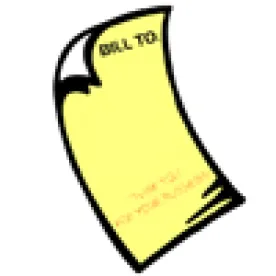A few weeks ago, we provided a few tips for negotiating and assessing a release contained in a contract modification, and discussed why the Civilian Board of Contract Appeals (CBCA) found that a global release contained in one of many contract modification was ambiguous.
Now, we consider a different scenario: what happens when a final payment clause requires the government to present a “final [payment] voucher” and “draft release of claims” form to the contractor—as opposed to the typical reverse scenario prescribed by FAR 52.232-5(h)—and the contractor fails to sign and return that voucher and release of claims form before the deadline stated therein? According to the CBCA in Ahtna Envtl., Inc. v. Dept. of Transp., CBCA 5456 (December 22, 2016) (AEI), this type of self-effectuating deemed release will not bar a contractor’s claim when the government knew about the claim and considered it despite the alleged release.
Continue reading for a summary of the AEI decision and our key takeaways.
The AEI Decision
AEI’s dispute was set into motion on February 11, 2015, when the Federal Highway Administration (FHWA) issued a unilateral deductive change order modification under the parties’ construction contract. AEI, at 4. Approximately two months later, AEI submitted an REA arising from the deductive change. Id. The next day, the FHWA sent AEI a draft final voucher and release of claims form. Id. Pursuant to the final payment clause in the contract, AEI was required to notify the FHWA of any claims that AEI intended to pursue within 90 days of receiving a draft final voucher and release of claims from the FHWA. Id. at 3–4. Otherwise, the release would be “deemed executed,” waiving AEI’s ability to prosecute such claims. Id. at 8–9.
AEI replied on June 16, 2015—within the 90 day period—and informed the FHWA in a letter that it would not execute and return the form, but would instead provide the FHWA with a request for equitable adjustment (REA) based upon various condition changes during performance and as a challenge to the FWHA’s retention of certain funds. Id. at 5. The contracting officer (CO) told AEI that it would forfeit its right to submit any claims if it failed to execute the release within 90 days. Id. at 5–6. AEI eventually submitted a REA to the Construction Operations Engineer (COE), who denied it on the merits, after which AEI converted the REA into a certified claim. Id. at 6–7. Thereafter, the CO informed AEI that the COE lacked authority to evaluate the REA, but agreed to consider AEI’s claim and REA preparation costs. Id. at 7.
The CO ultimately denied AEI’s claim on the basis that it had not reserved its right to file a claim by returning the release within 90 days. Id. After AEI appealed the final decision to the CBCA, the Government moved for summary relief, asserting that AEI’s failure to reserve specific claims in stated amounts pursuant to the final payment clause was an affirmative release of all claims.
The CBCA denied the Government’s motion for several reasons. See id. at 9–15. First, the CBCA found that AEI’s June 16, 2015 letter was “sufficient to preclude any waiver of [AEI’s] claims.” Id. at 9. Relying on cases requiring the Government to show prejudice from a contractor’s failure to comply with notice provisions, the Board saw “no reason not to apply that same rule to a deadline for reserving claims prior to final payment” under the circumstances. Id. at 9–10. The FHWA knew about AEI’s claims, but failed to demonstrate any prejudice. Id. at 10. The CBCA commented that to ignore this knowledge and enforce a waiver would elevate “form over substance.” Id. at 10.
The CBCA also rejected the Government’s argument because AEI never presented a release to the FHWA and sought to delay the issuance of the release. Id. at 12. The CBCA was skeptical of the idea of a “deemed” release, and opined on the inherent unfairness of the situation: “given that AEI expressly asked the FHWA to delay AEI’s need to respond to the draft voucher or submit a final release while simultaneously identifying for the FHWA the claims that it is working to quantify, the FHWA could not reasonably insist upon the strict time limit imposed by [the final payment clause].” Id. at 13. (As an aside, the CBCA also questioned the enforceability of the FHWA’s unique final payment clause in light of apparent conflicts with FAR 52.232-5(h), but did not reach the merits of this issue. See id. at 8–9 n.4.)
Finally, the CBCA found that AEI’s claim was not barred based on the principle that a release may not bar a claim where the Government continues to consider the claim after execution of the release. Id. at 14. Although the COE lacked the authority to evaluate AEI’s REA and claim, the CBCA determined that the CO was aware of the situation and was charged with having knowledge of the COE’s actions and their effect. Id. at 14–15.
Key Takeaways
-
Pragmatic decision: Like its recent decision in Bartsch, which we discussed a few weeks ago, the CBCA’s decision in AEI offers a pragmatic view on the interpretation and effectuation of a release. As we said before, context matters.
-
Don’t gloss over the release provision and any non-standard clauses: Although the CBCA’s decision in AEI was highly fact driven, it underlines the importance of reading a contract and carefully considering the meaning, impact and enforceability of a release provision and any non-standard clauses. Ask questions if a clause is confusing or seems out of the ordinary. It is better to tackle these questions upfront than being surprised down the road.
-
Contemporaneous documentation may help save the day: This decision demonstrates why it is often critical to contemporaneously document the issue du jour and provide concurrent notice to the government about such issues. If AEI had not informed the government of its intent to submit an REA after it received the voucher and release, this decision may have been written differently. A good paper trail often pays dividends at the end of the day.





 />i
/>i


